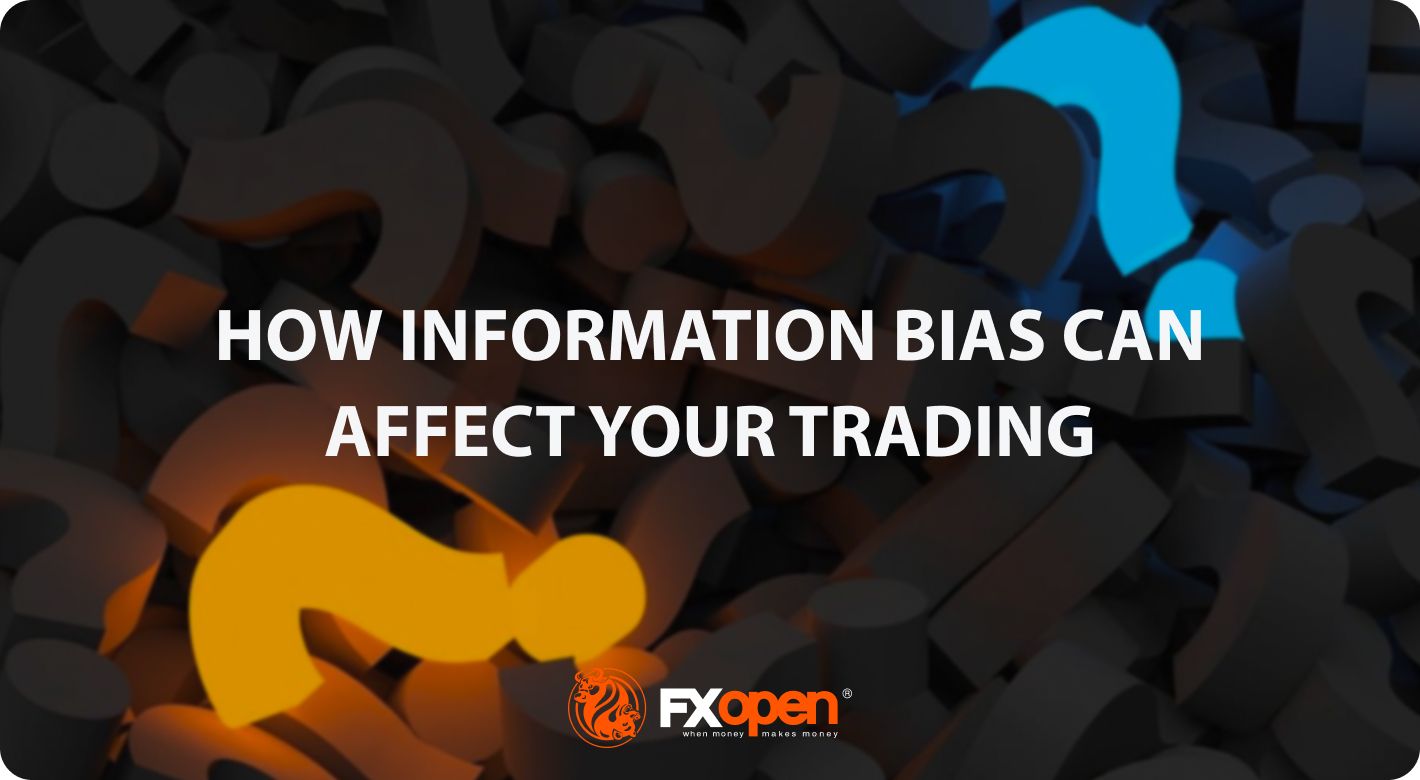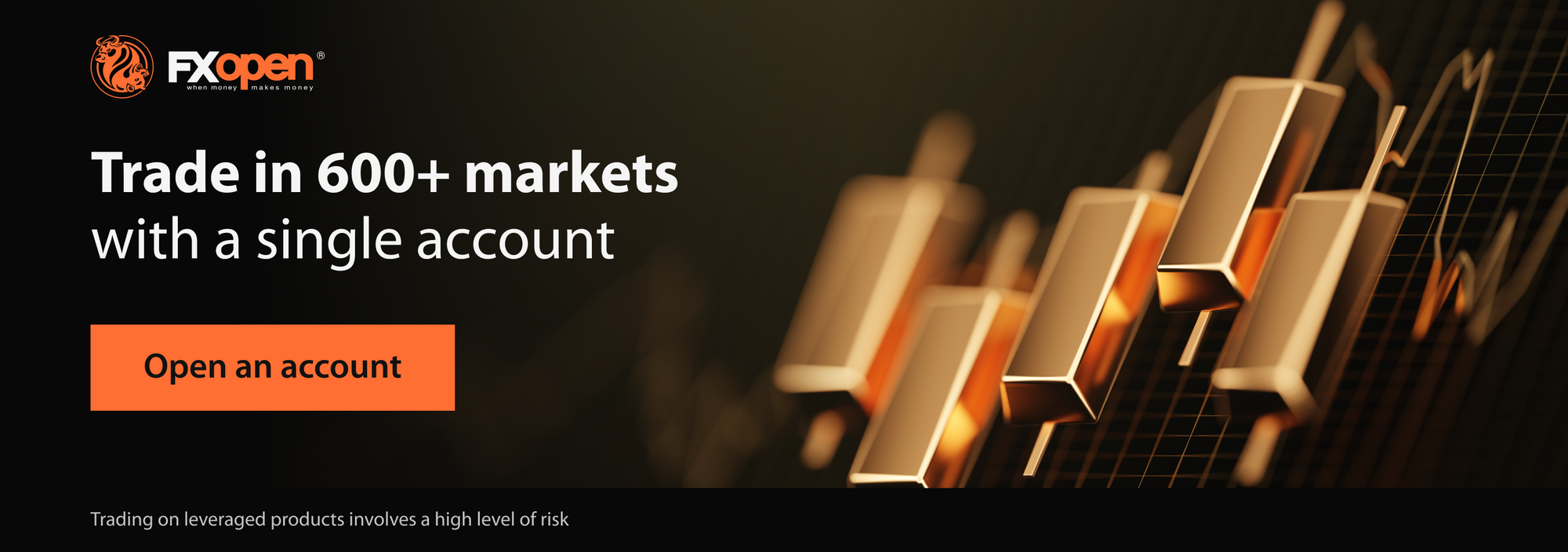FXOpen

Split-second trading decisions can make or break portfolios, and information plays a key role in this. Traders rely on vast amounts of data to make their choices, but what happens when that information becomes tainted by bias?
Information bias — the tendency to favour one piece of information over another — can be detrimental to trading decisions. It occurs when data is measured or interpreted incorrectly. This can be the result of an error, a deliberate distortion, or a subconscious need to filter information.
This FXOpen article focuses on the most common information biases. You will find the definition, the types, and the real consequences of information bias for traders.
What Is Information Bias?
Information bias in trading refers to the distortion of information, which leads to incorrect data being used to make decisions. This information bias definition may seem a little vague; this is because it can manifest itself in various forms, from overemphasising specific sources to selective interpretation of data.
Unbiased data is the foundation of sound trading. Traders rely on accurate and complete information to assess risks, identify opportunities, and make informed choices. Bias disrupts this balance by introducing a skew that misleads traders and results in suboptimal outcomes.
Why Is Bias Bad in Research?
Before looking at specific types of informational bias, it’s important to know why it harms research and trading. Simply put, bias distorts the ability to make decisions based on facts and evidence. Traders are susceptible to making decisions clouded by prejudice, which often leads to choosing assets poorly or using inappropriate trading strategies. Prudent traders try to avoid emotional and cognitive biases, as relying on these rather than reliable data is costly.

Types of Information Bias
Here are the most common examples of information bias.
Confirmation Bias
People tend to believe information that confirms their pre-existing beliefs. This bias stems from the tendency to seek confirmation and avoid cognitive dissonance, which occurs if people see something they don’t agree with. Confirmation bias occurs when people favour the facts that fit their preconceived notions and reject those that contradict them.
Confirmation bias can either incline traders to reevaluate their pre-existing beliefs or just ignore contradictory data. If traders over-rely on data that confirms their existing views, they can skip important information. This myopic approach can lead to missed opportunities and increased risk exposure.
Overconfidence Bias
Overconfidence implies an overestimation of one’s own abilities and knowledge. Traders experiencing overconfidence may misjudge the accuracy of their analysis and undermine risks. This means traders believe that they can consistently outperform the market.
Overconfidence leads to excessive risk-taking and poor trading decisions caused by a failure to carefully assess risks. This could result in financial losses when market conditions deviate from traders’ expectations.
Anchoring Bias
Anchoring bias occurs when people rely too heavily on the first information they receive. This initial data becomes an anchor that influences subsequent judgements. Inaccurate analysis and actions occur because traders inadequately consider information that contradicts what they found initially.
With anchoring bias, traders fixate on irrelevant or outdated information. This impedes their capacity to adjust to evolving market circumstances. In turn, inflexibility can lead to missed trading opportunities and dissatisfactory results.
Herd Mentality and Social Influence
Herd mentality is the tendency of people to follow the actions of a large group, often without critical evaluation. You probably know of some cases when traders based their actions on what others were doing. This a way to make the most irrational trading decisions imaginable: no analysis or justification — consider it blind trading.
Social influence reinforces herd mentality, as traders conform to the behaviour of the crowd. They are led by the actions and opinions of influencers rather than making independent choices.
Herd mentality can lead to market bubbles and crashes, as well as exaggerated market movements based on subjective estimates posted on social media. Although this creates opportunities for savvy traders, it also causes unreasonable panic among the rest of the community.
Media and Information Bias
The media has the power to shape traders’ perceptions. For example, sensationalism and selective reporting amplify certain aspects of information, influencing market sentiment. Financial news, if not evaluated critically, also can perpetuate bias. People may react to news events without considering the implications for their own portfolios.
To counter information bias caused by the media, traders can diversify their sources of information, cross-check news, and maintain a critical stance. Experienced traders strive to train alertness and understand the link between events and market movements. This helps to distinguish objective information from biased narratives.
Behavioural Finance
To deal with bias, one way to go is to learn about behavioural finance. You may read how human behaviour affects financial decisions in our blog in more detail, and here’s its condensed version.
- Behavioural finance recognises that traders can be irrational, and their decisions can be influenced by biases.
- The study of trader behaviour includes researching heuristics — the process by which people use mental shortcuts to form judgements quickly.
- Exploring the different types of biases, cognitive errors, and the underlying emotions, as well as their impact and strategies to mitigate them, is paramount.
- Knowing the cognitive factors that lead to failures during trading helps traders develop well-designed strategies and make more objective decisions.
The theory states that technical and fundamental analyses may help traders overcome bias and base their decisions on price data and effective, time-tested indicators. You can use them on the TickTrader platform.
Final Thoughts
Information is power, but biassed information can be a double-edged sword. By understanding the psychological foundations of biases, diversifying information sources, and staying educated, traders may navigate the markets with greater precision. It’s critical to ensure that information bias does not compromise your overall performance. If you want to trade in over 600 markets with tight spreads from 0.0 pips and commissions from $1.50, you can open an FXOpen account.
This article represents the opinion of the Companies operating under the FXOpen brand only. It is not to be construed as an offer, solicitation, or recommendation with respect to products and services provided by the Companies operating under the FXOpen brand, nor is it to be considered financial advice.
Stay ahead of the market!
Subscribe now to our mailing list and receive the latest market news and insights delivered directly to your inbox.








